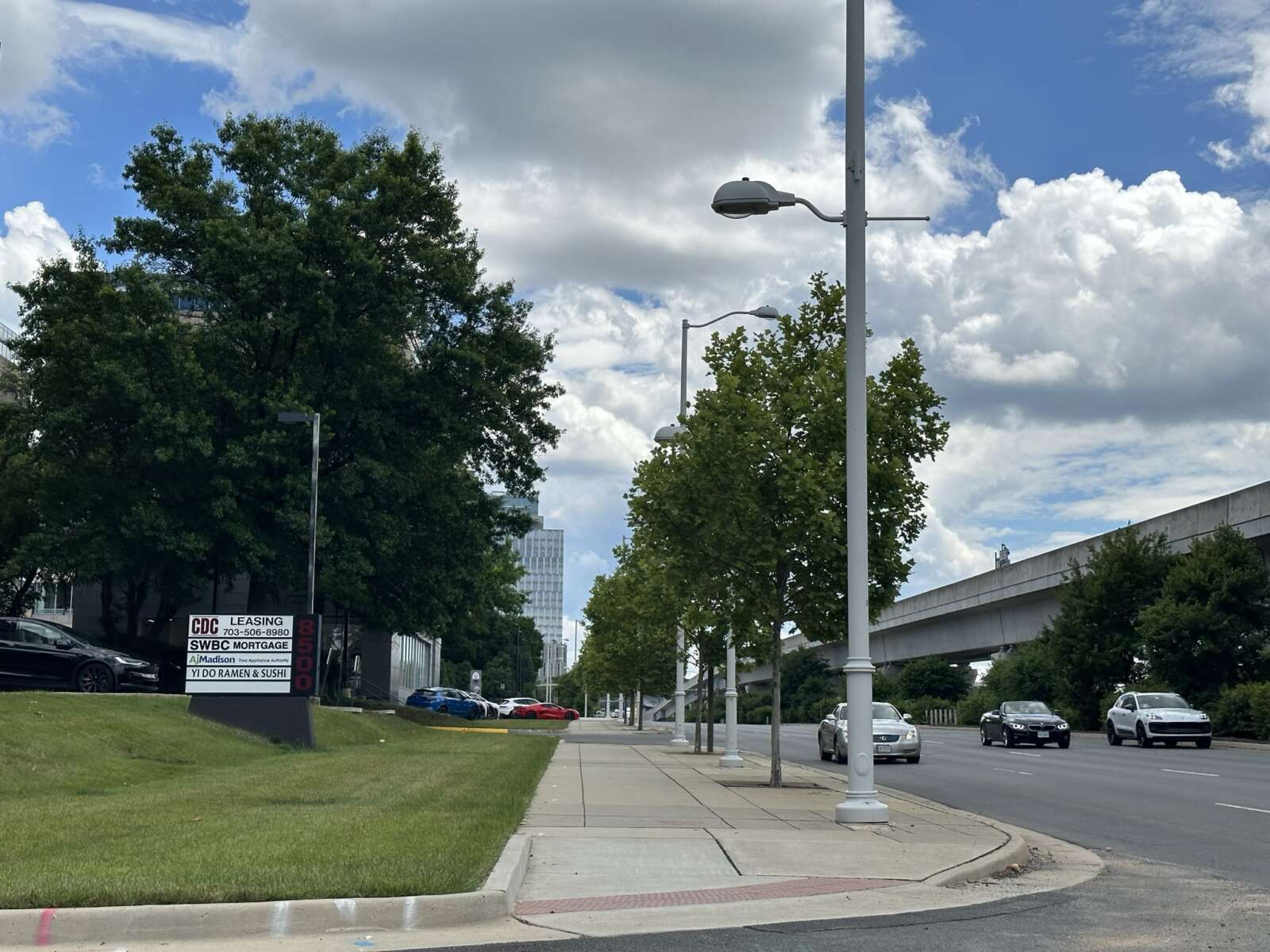
Fairfax County is exploring ways to formalize its process for approving street light waivers that are typically required for some developments.
At a land use committee meeting on Jan. 30, the Fairfax County Board of Supervisors expressed support for clarifying and elaborating upon the county’s current processes.
Currently, street lights are required for site and subdivision plans, typically along existing and proposed right-of-way and at intersections if they are along Virginia byways or larger lot subdivisions. Developers can request waivers, but the county doesn’t specify when they should be granted.
The formalized policy is intended to create an objective and transparent decision-making process for the director of Fairfax County Land Development Services (LDS) to consider waiver requests.
“This is proposing criteria for what the director will consider in evaluating those type of waiver requests,” Jerry Stonefield, an engineer for LDS, said at the meeting.
Specifically, the director would evaluate existing conditions, the design of the intersection and street, pedestrian activity and nearby uses, collision and crime data, and environmental considerations. But at least one street light at each intersection will still be required.
Board members said they were supportive of the change, which encourages transparency.
“I think it’s great to put some standards in,” Sully District Supervisor Kathy Smith said.
Braddock District Supervisor James Walkinshaw encouraged staff to work with the county’s health department on the issue. He said the lack of street lights is one of the key drivers of crashes involving pedestrians.
However, Springfield District Supervisor Pat Herrity said he was unclear what problem the county was attempting to solve.
“I’m worried about adding cost and time to a process that’s already expensive,” he said.
Stonefield said in the a small number of cases, the county ran into some problems justifying why street lights should or should not go in based on its current requirements, which provide scant criteria for evaluation.
The county has received between 80 and 90 street light waiver requests over 20 years, according to Stonefield.
Board Chairman Jeff McKay said that number was important because it demonstrates that the policy change covers an “extreme outlier.”
Staff will now consider implementing the changes after a virtual open house and official board consideration at a meeting date that has not yet been determined.
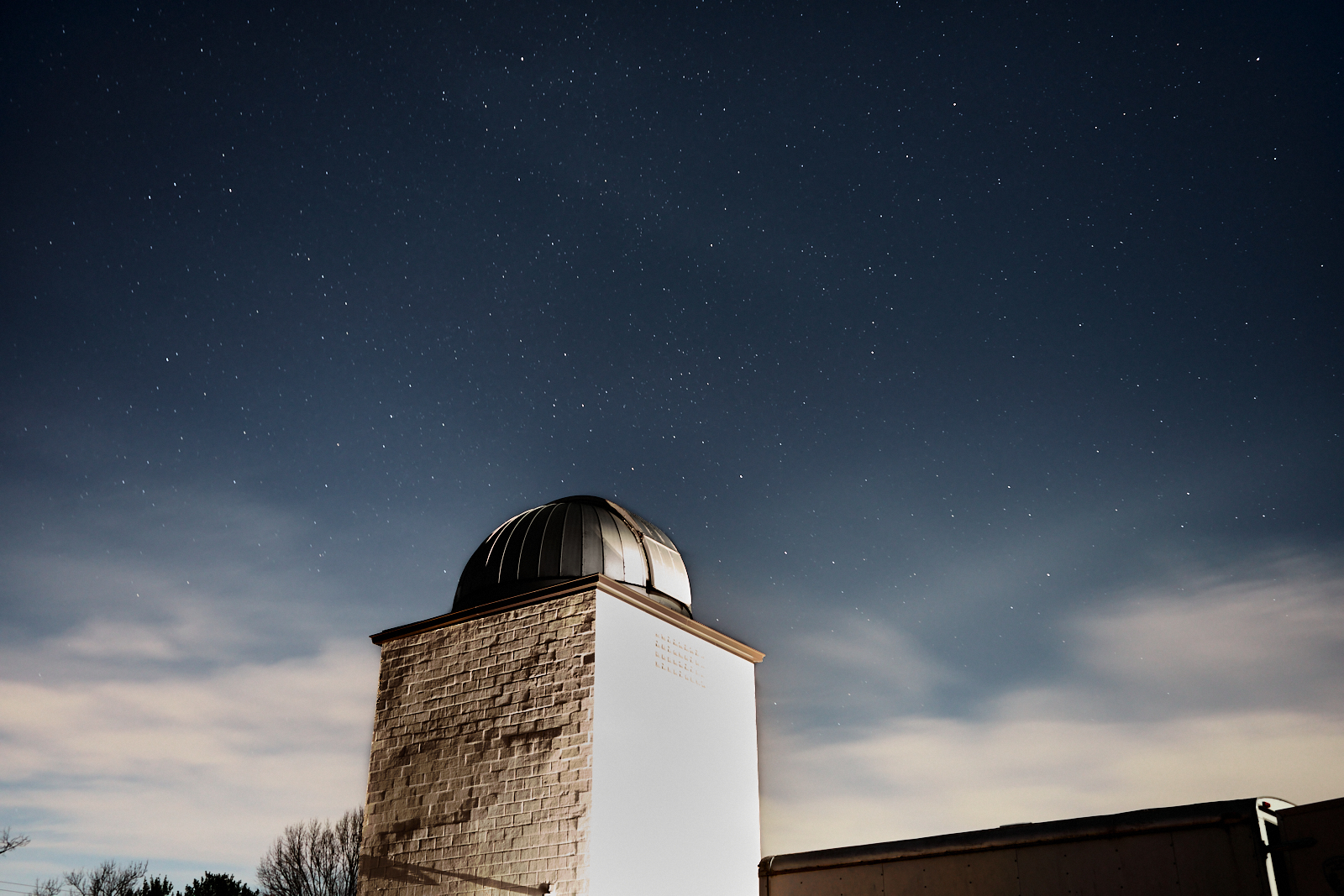
(Updated at 4:55 p.m.) After more than two years of development, a new set of regulations will officially preserve dark skies around Turner Park Farm Observatory in Great Falls.
At a meeting on Nov. 21, the Fairfax County Board of Supervisors unanimously approved zoning changes that aim to reduce light pollution and preserve dark skies within a half-mile of the observatory.
The proposal was significantly pared down after several community meetings and town halls. The changes will only apply to future lights on properties located within a half-mile of the observatory.
Dranesville District Supervisor John Foust said he was satisfied with the proposal, which he called a “very reasonable approach” to the challenge facing the community.
“It’s not unanimous in the community, but I will say that the opposition is much less almost justified than it was when this thing started,” Foust said.
Under the zoning ordinance amendment, motion-activated outdoor lights must be 1,500 lumens or less — a drop from the current limit of 4,000 lumens or less.
Additionally, all lights need to be fully cut off — meaning the bulb can’t be exposed — which is currently not required. Still, an exception to the cut-off and shielding requirements will remain for lights at a door or a garage of up to 1,500 lumens per fixture.
The regulations would also set limits on the number of up-lights or spotlights allowed. Currently, any number are allowed as long as they’re fully cut off or shielded to confine light. The changes would limit each fixture to 300 lumens.
Unlike at previous public hearings, divisive testimony was limited. Several testifiers spoke in favor of the changes to the zoning ordinance.
Jennifer Falcone, a representative for the Great Falls Citizens Association, said the proposal is integral to protecting a “treasured community resource.”
“I live within this area,” Falcone said. “Given the evolution of lighting technology and the introduction and popularity of LED lighting, GFCA believes this measure is especially appropriate.”
Eileen Kragie, president of Dark Sky Friends, a nonprofit organization that aims to preserve dark skies, emphasized that the changes are sorely needed.
“Light pollution is growing at twice the rate of the population,” Kragie said. “In 20 years, stars won’t be visible.”
Mount Vernon District Supervisor Daniel Storck said the proposal’s approval could pave the way for future changes.
“This is in my mind…the start of a process that is mostly voluntary,” Storck said. (The spelling of Supervisor Storck’s name has been corrected.)
The amendment’s passage came on the same day that the Board of Supervisors approved zoning changes that will permit brighter electronic signs in more urbanized and commercial districts.
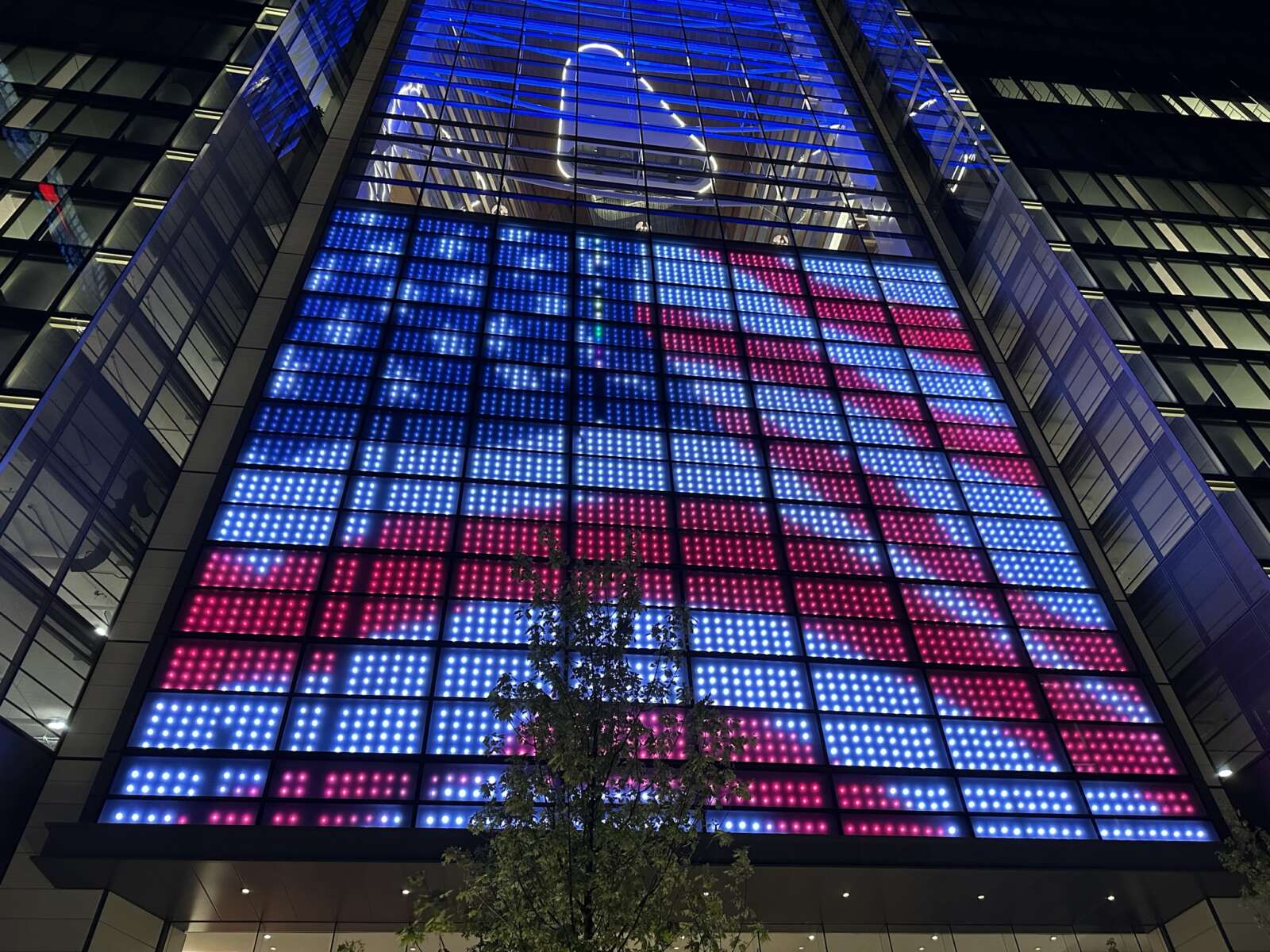
Electronic signs on display at eligible businesses, schools and other establishments can now shine brighter at night.
In planned, commercial and industrial zoning districts within Fairfax County, electronic display signs can now reach brightness levels of up to 300 nits at night, compared to 100 nits previously.
The Board of Supervisors unanimously approved the change to the county zoning ordinance after a public hearing at its Nov. 21 meeting.
“Nits” indicate an object’s brightness. Common cellphones, televisions and computer monitors have nit levels between 250 and 600, according to a county staff report. Under existing county rules, a lot has a designated amount of “freestanding sign area” and may have one electronic display sign that uses up to 50% of that area.
“During outreach on this amendment, we did receive feedback from industry that modern screens are getting brighter, including the widespread use of LED technology,” said Casey Judge with the county’s Department of Planning and Development.
Feedback and research led to county staff’s recommendation to increase the maximum brightness, Judge said.
In residential districts, the maximum nit level will remain 100 nits at night. The 100-nit limit will also apply to any electronic display signs visible to a single-family dwelling within 150 feet of the property with the sign.
Staff had recommended increasing the maximum nit level to 500 nits in planned, commercial and industrial areas in an Oct. 3 report. However, the Fairfax County Planning Commission recommended the ultimately approved 300-nit maximum and the 100-nit maximum for signs located near single-family homes, Judge said.
“I’m not sure 150 feet is the right number, but I think this is one of those things, over time, we’ll probably be getting feedback if it’s too short,” Hunter Mill District Supervisor Walter Alcorn said.
Three community members spoke during the public hearing. Kenny Peskin, a McLean resident who identified himself as an employee of the International Sign Association, said he was “generally in support of the motion,” in particular the version in the staff report with the higher nit limit.
Eileen Kragie, founder of an organization called Dark Sky Friends that advocates against light pollution, spoke against artificial light at night, but called the work “a credible first cut for the electronic signage ordinance.”
Jennifer Falcone called in on behalf of the Great Falls Citizens Association, reporting that the board of the association supported the motions adopted by the planning commission.
Changes to the zoning rules for outdoor signs have been in the works for over a year. Staff presented an initial proposal in May that underwent two public hearings with the planning commission.
Other approved changes include combining three sign application processes and permitting illuminated window signs of up to 4 square feet in non-residential locations.
County staff will provide a report on the implementation of the new guidelines within 18 months.
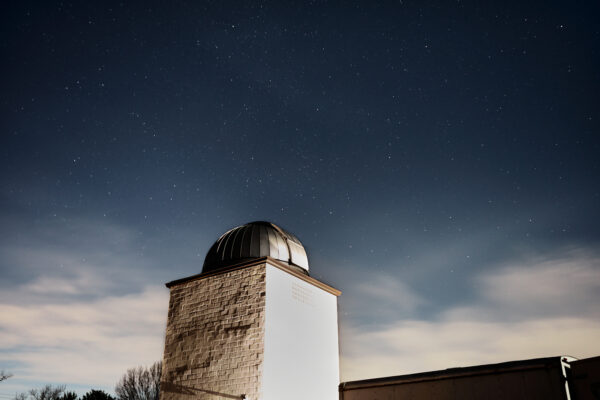
An effort to preserve dark skies in Great Falls recently got a vote of support from the Fairfax County Planning Commission amidst contention within the community.
At a heated Oct. 18 meeting, the commission unanimously recommended approval of regulations to preserve dark skies around Turner Park Farm Observatory Park. Public testimony, however, was divided into two camps.
Proponents called the proposal a necessary step to preserve dark skies, reduce light pollution, and ensure astronomers can continue to get clear views. Opponents said the changes would decrease safety, were being considered without direct community engagement, and did little to result in a meaningful impact on light pollution.
The regulations, which limit outdoor lighting with a half-mile of the observatory, have been in the works for years. The latest version was pared down after several town halls and an online community survey.
Under the proposed zoning ordinance amendment, motion-activated outdoor lights must be 1,500 lumens or less — a drop from the current limit of 4,000 lumens or less. Additionally, all lights need to be fully cut off, which is currently not required.
Still, an exception to the cut-off and shielding requirements will remain for lights at a door or a garage of up to 1,500 lumens per fixture.
The regulations would also set limits on the number of up lights or spotlights allowed. Currently, any number are allowed as long as they are fully cut off or shielded to confine light. The changes would limit each fixture to 300 lumens. Changes would apply to future lights.
But some residents said they were in the dark about the proposal. They also said they were concerned about the safety impacts of reduced lighting.
Laszlo Zsidai, president of Foxvale Farm’s homeowners’ association, said the neighborhood of 115 homes received no direct engagement from the county on the amendment, noting that an online community survey conducted by the county found 50% of respondents were not supportive of the changes. A survey conducted by the HOA of its own community found similar levels of support, he said.
He also questioned if regulating lights near the observatory was effective in the shadow of other high-rise, luminous developments in surrounding areas like Tysons.
“Their light pollution will eat us up,” Zsidai said.
Great Falls has a visibility level of around 6 when judged on a Bortle scale where 1 means excellent viewing and 9 means poor viewing.
Dranesville District Commissioner John Ulfelder emphasized that Great Falls has one of the lowest crime rates compared to other parts of the county.
“Crime in Great Falls is not rampant. It’s not even serious. But it’s important to feel that they have a sense of security,” Ulfelder said.
Others, including the Great Falls Citizens Association and several astronomy organizations, expressed support for the proposal.
Thomas Reinert, president of DarkSky International, described the regulations as a compromise. He noted that students at Thomas Jefferson High School for Science and Technology near Lincolnia can no longer use a telescope on their facility due to the increase in light pollution over the years.
The observatory at Turner Farm is among a handful of facilities in the area where astronomical viewing can continue — for now.
“In no sense are these rules onerous,” Reinert said.
Dr. Peter Flavchan, a professor of phusics and astronomy at George Mason University, emphasized that light pollution has doubled in just the last 10 years. He compared the community to a “proverbial frog” sitting in water that is slowly reaching a boiling point.
The proposal heads to the Fairfax County Board of Supervisors for a final vote on Nov. 21.

Fairfax County is exploring ways to preserve dark skies around Turner Farm Park Observatory in Great Falls.
At a Tuesday (Sept. 12) meeting, the Fairfax County Board of Supervisors announced public hearings on a proposed regulation that would limit outdoor lighting within a half-mile of the observatory at 925 Springvale Road.
A hearing before the Fairfax County Planning Commission is set for Oct. 18, followed by a Board of Supervisors’ meeting on Nov. 21.
If approved, the amendment would apply to 525 lots near the observatory.
The Fairfax County Police Department “has advised that proper lighting can be a deterrent for criminal activity, but over-lighting is not needed to facilitate a safe environment,” according to a staff report in the board agenda.
Staff say light pollution interferes significantly with the ability to complete astronomical observations at the observatory. For example, a single light bulb located one half-mile from the observatory has the same impact as four bulbs one mile away or almost 200 bulbs in Tysons, which is roughly seven miles away.
According to the draft proposal, motion-activated lights must be 1,500 lumens or less — a drop from the current limit of 4,000 lumens or less. Additionally, all lights need to be fully cut off, which is currently not required.
Still, an exception will remain allowing lights at a door or a garage of up to 1,500 lumens per fixture.
The regulation would also set limits on the number of up lights or spotlights allowed. Currently, any number are allowed as long as they are fully cut off or shielded to confine light. The changes would limit each fixture to 300 lumens.
The draft text was developed after several town halls and an online community survey. The scope of the proposal was changed after discussions with stakeholders.
For example, the current version lets legally existing lights remain until replaced, superseding a previous version that required existing lights to comply within five years of the policy’s implementation.
In a statement to FFXnow, a Great Falls Citizens Association representative said the introduction of the proposal represents a milestone after eight years of works.
“This has special significance for the Turner Farm, where the Fairfax County Park Authority made a major investment in a roll-top astronomy building,” GFCA said in a statement. “If adopted, the proposed amendment will affect the brightness of future outdoor lighting of homes within a one-half mile radius of the county’s observatory.”
GFCA also acknowledged that, while not all residents in the affected area will agree with the county’s plans, county staff made “significant changes in the proposed requirements.”
“GFCA believes that the amendment offers reasonable measures to address concerns while preserving dark skies near the observatory,” the association said.
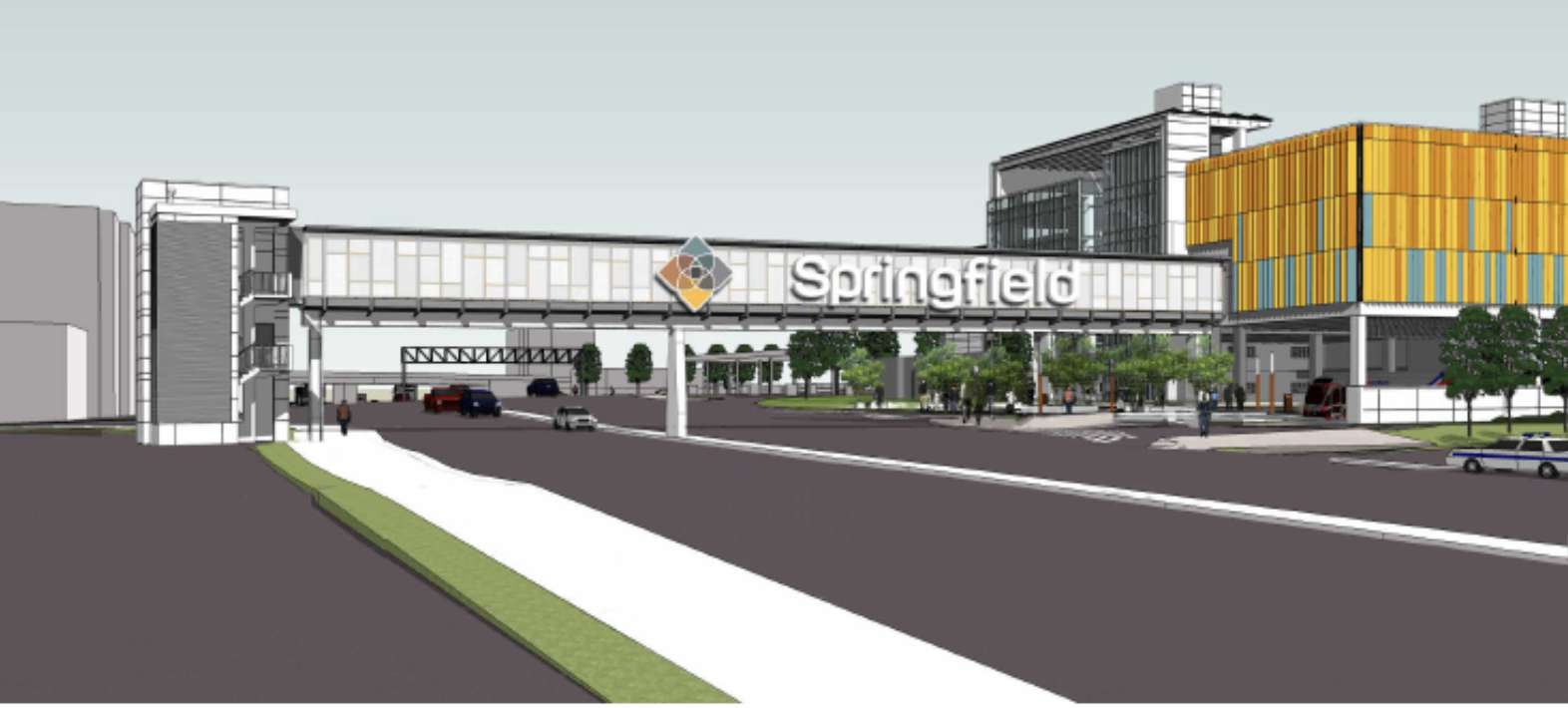
(Updated at 3:10 p.m.) An extra $150,00 is being requested to add a “unique lighting feature” to the colorful “Springfield” welcome sign set to be installed on a pedestrian bridge near Old Keene Mill Road later this year.
At last week’s Fairfax County Board of Supervisors meeting, Franconia District Supervisor Rodney Lusk proposed that the board consider spending $150,000 from the fiscal year 2023 carryover adjustment on a lighting feature to “complement” a welcome sign going up on the pedestrian bridge near the new Springfield Commuter Parking Garage.
The lighting would be part of a branding project to install colorful welcome signs at four different sites around the greater Springfield area in the fall. It’s being done to “raise the visibility and reputation of Springfield as a great place to live and do business,” per the project’s website.
One of the signs will be on the pedestrian bridge connecting the commuter parking garage to Springfield Plaza. The bridge and garage are expected to be completed in December.
The requested lighting feature would illuminate the pedestrian path underneath the bridge, known as the Frontier Drive underpass.
However, an extra $150,000 is needed for the feature, which was not part of the initial planned project. Lusk is requesting that the money be allocated from the FY 2023 Carryover Budget, which has a balance of about $203 million (which is slightly more than last year).
“This lighting feature will improve the connection with the Franconia- Springfield Metrorail station while also improving pedestrian safety and comfort,” Lusk’s board matter said. “This installation is beyond the budget of the initial gateway project, so additional funds are being sought to complete the gateway system for Springfield.”
Lusk noted in a follow-up statement to FFXnow that the extra lighting is needed for safety and security and to enhance the signage visually.
The priority for the lighting is to provide increased pedestrian safety beneath the underpass. The new lighting will enhance visibility and security for pedestrians who are walking from the Metro to the Springfield Towne Center. Additionally, the lighting will be designed to highlight the new Springfield Branding elements including color and design from the Springfield logo and new gateway signage. The preliminary design intends to project lighting on the columns of the underpass providing a brighter, more well-lit space with color.
A public hearing and board action on the package is scheduled for Sept. 26. Other items suggested for consideration by individual supervisors include funds to continue an economic visioning study for Lake Anne in Reston.
If the Springfield lighting feature is approved for inclusion, then the final design work and construction would move forward.
Construction on the gateway signs is now underway and expected to finish between October and December, according to Lusk’s office. However, the Frontier Drive underpass lighting is more likely to come along next year, depending on when funding, the final design and permits are secured.
“The lighting installation for the Frontier Drive underpass is conceptual at this time, and subject to change,” a spokesperson for Lusk’s office said.
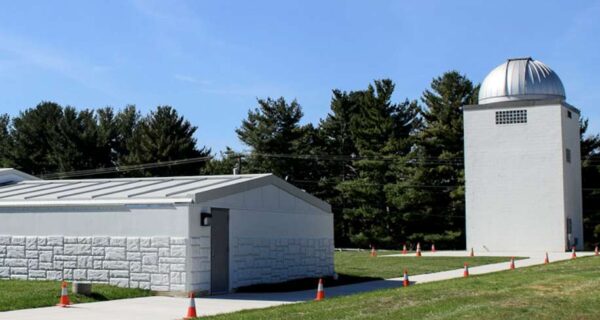
A project to reduce light pollution at Turner Farm Park Observatory will soon kick off.
The project, funded by the Mastenbrook Volunteer Matching Fund Grant Program, will provide $7,515 to retrofit 26 light bollards to replace current fixtures with LED lights.
“The retrofit project will position Turner Farm Park to apply for designation as one of seven Urban Night Sky places by the International Dark Sky Association,” the Fairfax County Park Authority said last week.
The Analemma Society, which conducts astronomy and science education programs for more than a decade at the observatory, will pitch in a little over $5,100 toward the retrofit.
When applying for the grant, representatives of the Analemma Society explained that the retrofit is the “last piece” needed to meet the criteria for an Urban Night Sky Place, a label awarded to parks, open space or observational sites near an urban environment that “actively promote an authentic nighttime experience in the midst of significant artificial light.”
The park began the application process to obtain the designation over two years ago.
“Light pollution is a major environmental problem,” the grant application said. “This project aims to reduce light pollution by creating demonstration lights showing proper dark sky lighting design to help educate the public on this. In doing so it also improves the lighting at the observatory to provide better views of the night sky for participants in our astronomy outreach programs.”
The park is located at 925 Springvale Road in Great Falls.
The grant was officially approved by the park authority’s board of directors on May 31.
The board also approved roughly $2,400 for improvements at Lewinsville Park in McLean. It will fund the installation of 230 linear feet of black privacy slats on the existing pickleball courts to create a windscreen for players.
The Mastenbrook grant program supports public-private ventures. Grant amounts range from a few hundred dollars up to $20,000.
The county is in the midst of changing light regulations around the observatory. The draft policy aims to amend zoning standards for outdoor lighting within a half-mile of the observatory.

